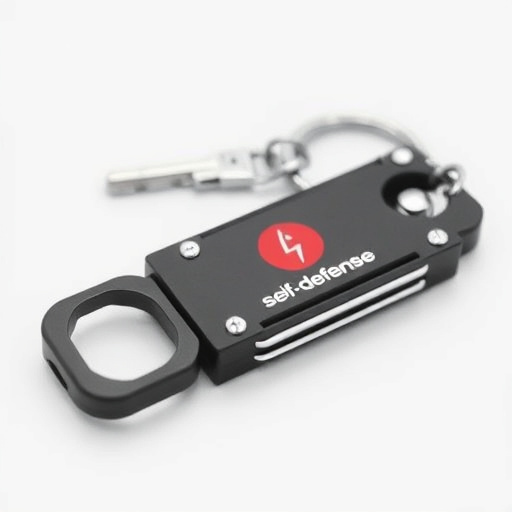Keychains with combat capabilities, known as keychain weapons, vary in legality across jurisdictions, making it vital to understand local laws before owning one for self-defense. While some items like pocket knives and spray are generally allowed, others such as long-bladed devices, metal batons, and certain types of knives may be prohibited. Staying informed about the Prohibited Keychain Weapons List specific to your region is crucial to avoid legal issues while ensuring your chosen self-defense tool meets durability and functionality standards.
“In today’s unpredictable world, many individuals seek effective personal defense options, and the legal self-defense keychain weapon has emerged as a compact solution. This article guides you through the intricate legal landscape surrounding these tiny tools, offering clarity on what constitutes a keychain weapon and how to discern prohibited items from legal defenses. We’ll explore essential rights and responsibilities, enabling you to make informed choices when selecting a keychain weapon, with a detailed list of prohibited models to ensure your safety and compliance.”
- Understanding Legal Definitions: What Constitutes a Keychain Weapon?
- Exploring Prohibited Keychain Weapons: A Comprehensive List
- Self-Defense Rights and Responsibilities: Key Considerations
- Choosing the Right Tool: Features to Look for in a Legal Self-Defense Keychain Weapon
Understanding Legal Definitions: What Constitutes a Keychain Weapon?
The legal definition of a keychain weapon varies across jurisdictions, but generally, it refers to any object designed or commonly used as an aid in combat that can be easily carried and concealed on a keyring or within easy reach. This category includes items like pocket knives, flick knives, and certain types of self-defense spray, among others. Understanding what constitutes a legal keychain weapon is crucial when considering self-defense options, as possession of prohibited keychain weapons can lead to severe legal consequences.
It’s essential to be aware of the prohibited keychain weapons list specific to your region, as these laws differ greatly. Some jurisdictions have strict regulations on certain types of knives and self-defense tools, while others may allow a broader range of items. Knowing and adhering to these legal definitions is vital for ensuring you are not breaking any laws while attempting to protect yourself.
Exploring Prohibited Keychain Weapons: A Comprehensive List
When considering a keychain weapon for self-defense, it’s crucial to understand what is and isn’t permitted by law. Exploring prohibited keychain weapons is an essential step in ensuring you stay within legal boundaries. Many countries and regions have strict regulations on personal defense tools due to safety concerns. As such, certain types of keychain weapons are explicitly forbidden.
The list of prohibited keychain weapons includes, but is not limited to, items like knife-like devices with blades over a certain length, metal batons, and any object designed or modified for combat purposes. Even seemingly innocuous tools like opening tools with sharp edges or ballpoint pens with retractable blades can be illegal in some jurisdictions. It’s vital to research local laws and regulations to avoid legal repercussions.
Self-Defense Rights and Responsibilities: Key Considerations
In many jurisdictions, individuals have a right to protect themselves and their property, but this comes with responsibilities. When considering self-defense options, understanding what constitutes a legal keychain weapon is crucial. The legality of such tools varies significantly based on local laws and regulations, so it’s essential to research and comply with your area’s rules. Owning a prohibited keychain weapon can result in severe consequences, including criminal charges.
Keychains designed for self-defense must be distinct from everyday items that could cause harm. A typical prohibited keychain weapons list includes items like stun guns, tasers, and certain types of knives or bladed devices. It’s important to differentiate these from standard, everyday keychains that serve purely decorative purposes. Always stay informed about the legal boundaries to ensure your self-defense choices remain within ethical and legal parameters.
Choosing the Right Tool: Features to Look for in a Legal Self-Defense Keychain Weapon
When selecting a self-defense keychain weapon, it’s crucial to consider your specific needs and local laws regarding prohibited keychain weapons. Unlike traditional firearms or larger self-defense tools, keychain weapons are designed for portability and ease of use, making them appealing for personal safety on the go. However, understanding legal limitations is essential; some states have strict rules about what constitutes a legal self-defense weapon, including restrictions on size, shape, and functionality.
Key features to look for include a sharp, durable blade capable of breaking through skin and causing significant harm without causing permanent disability or disfigurement—a key difference from traditional knives designed solely for cutting. Additionally, consider a design that allows for a firm grip and easy deployment, ensuring you can use it effectively during a sudden attack. Always check state and local laws regarding prohibited keychain weapons to ensure your chosen tool complies with legal requirements, such as blade length and any specific regulations on automatic or spring-loaded mechanisms.
When considering a legal self-defense keychain weapon, understanding both your rights and the limitations set by law is paramount. With the right tool featuring specific design elements that distinguish it from prohibited keychain weapons (as outlined in our comprehensive list), you can effectively arm yourself while adhering to legal boundaries. Always remember your responsibilities and stay informed about local regulations to ensure your safety and compliance.
